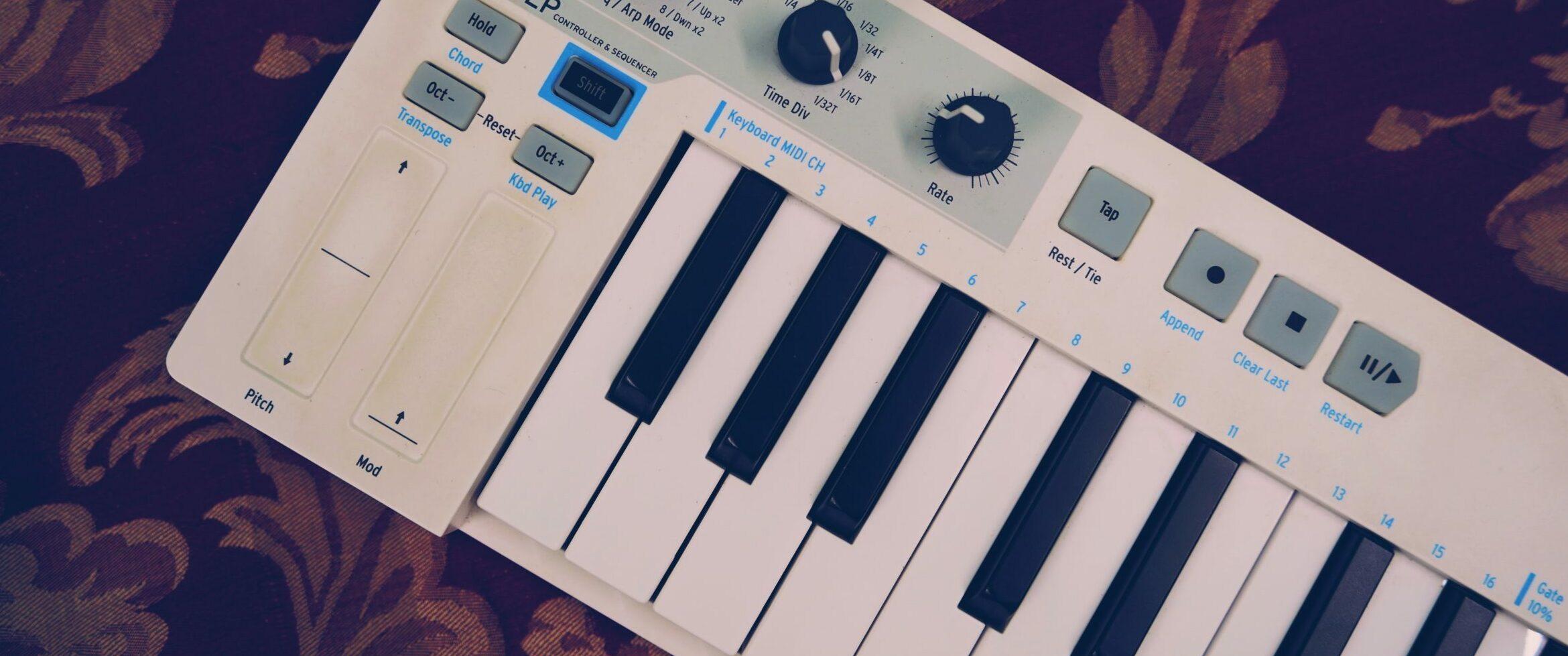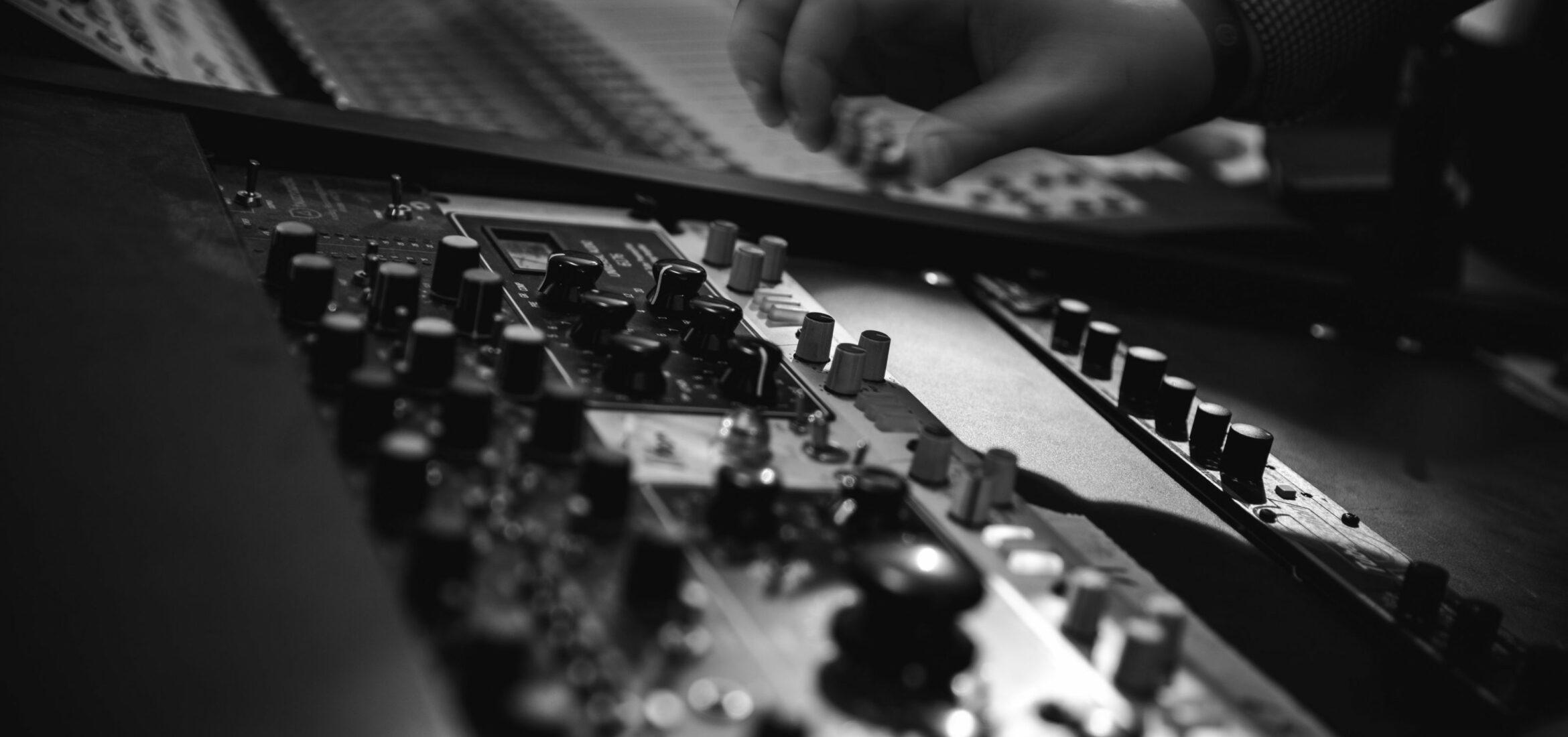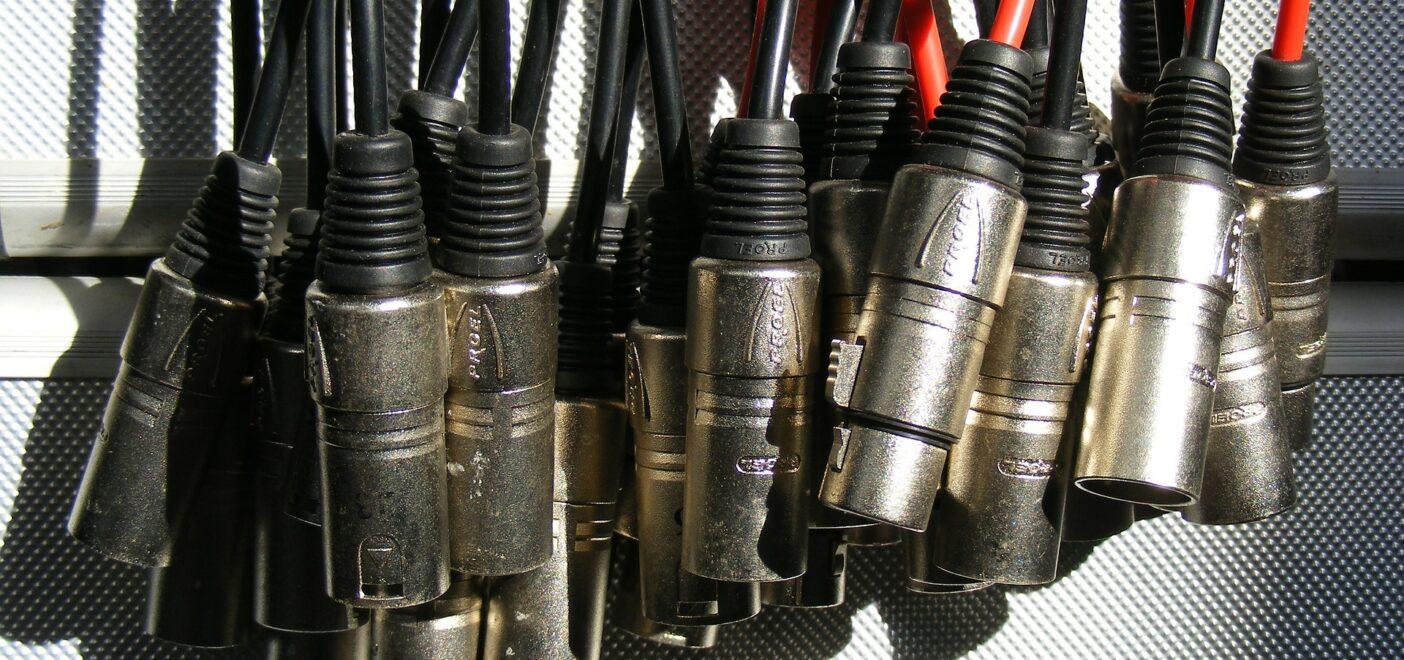While not an essential piece of your home studio equipment, a USB MIDI controller can add a world of possibilities to your productions in a relatively small package. MIDI, short for Musical Instrument Digital Interface, is a universal language that various devices can understand. This technical standard makes it easy to transfer MIDI data from one device to another while retaining its crucial information, such as pitch, velocity, and panning. A MIDI controller acts as an interface that manipulates, writes, and transmits MIDI data. Having a MIDI controller in your studio allows you to easily input and adjust MIDI notes in your DAW. Beyond that, some MIDI controllers can be used as virtual instruments, to mix audio, and even to control lights.
But with so many USB MIDI controllers on the market, how can you choose the right one for your home studio? Let’s explore the many factors that play into choosing a USB MIDI controller.
USB MIDI Controller vs. MIDI Keyboard: What’s the Difference?
Before we begin, let’s clear the air. The terms “MIDI controller” and “MIDI keyboard” are often used interchangeably. This conflation makes some sense, but it’s a bit misleading. A MIDI controller simply refers to any device that creates, translates, and controls MIDI data while connected to another MIDI-enabled system. Therefore, MIDI controllers can refer to a software instrument or a piece of hardware.
MIDI keyboards, on the other hand, are types of MIDI controllers that feature buttons resembling piano keys for additional control and musical purposes. Because of their ease of use and versatility, MIDI keyboards are the most common kinds of MIDI controllers. To make matters more confusing, MIDI keyboards and audio synthesizers often look alike but refer to different devices as well. Synths produce sound while MIDI controllers do not (at least, not on their own). That said, many synthesizers can also act as MIDI keyboards/controllers.
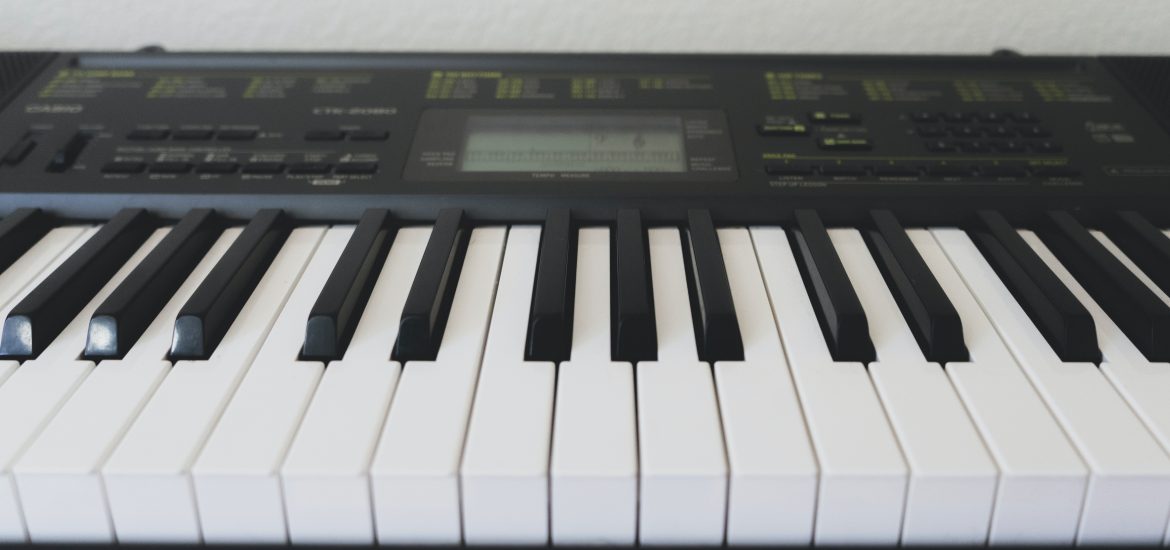
In short, all MIDI keyboards are controllers, but not all MIDI controllers are keyboards. As you research various controllers you will come across several keyboards, but also a number of products that look nothing like pianos. Fear not, for these are still MIDI controllers. Indeed, a non-keyboard MIDI controller might actually be best for your purposes. But the only way to determine which controller is right for you is to know what you plan on doing with it.
What Are Your MIDI Needs?
The first step in choosing your USB MIDI controller is figuring out how you want to use it. For instance, consider if you want a MIDI device that you can play like an instrument. If so, you’ll want a keyboard with plenty of keys and controls for sustaining notes, bending pitch, changing octaves, etc. Then, ask yourself if you plan on keeping your MIDI controller in your home studio or if you want a device that you can take with you. This will determine whether or not you look for portable MIDI controllers. And if you want to use your controller in a live setting, you’ll look at a different subset of options.
Whatever the case, knowing your specific needs will help you narrow the field and better inform your purchase.
What to Look For in a MIDI Controller
Now, it’s time to get more specific. MIDI controllers share several basic functions, but they vary in terms of their range of features, size, compatibility, and cost. As such, one controller might have more or less of what you want when compared to the rest. Let’s go through each component of a USB MIDI controller so you know what to look for.
Features/Controls
Even controllers on the simpler end can have their fair share of connectors, buttons, and knobs that overwhelm the eye. Once you know what these various do, however, choosing a controller becomes much less daunting. The main things to consider are inputs/outputs, faders, knobs, buttons/keys/pads, action, and additional features such as pitch bend and aftertouch.

Number and Types of Inputs and Outputs
MIDI controllers are useless if they can’t connect to other devices. A USB MIDI controller obviously connects via USB, but many controllers feature additional input and output options which may come in handy. The main two are 5-pin MIDI DIN jacks and MIDI CC (continuous controller) pedal jacks. The former allows you to control other MIDI instruments (like hardware synthesizers) and the latter lets you hook up an expression pedal to modulate various parameters, such as velocity, pitch, and vibrato. The more input and output options available, the more control you have.
Faders and Knobs
The faders, knobs, and buttons on a MIDI controller can be used for a number of purposes. In many cases, you can even map these controls to different parameters. But whether you use these various controls to adjust volume, pitch, phase, frequency, etc., they’re meant to give you a more hands-on feel and to increase precision. If you’re looking for maximum control, the more buttons, the better.
Keys and Action
These features only apply to MIDI keyboards and not all MIDI controllers, of course. But if you’re specifically looking for a keyboard, you probably care about the number of keys and how they feel. Keep in mind that more keys necessitate a larger unit (see “Size” below). So, if space is a concern, you might need to sacrifice some of those 88 keys. Fortunately, many MIDI keyboards feature an octave button or switch that lets you access a wide range of notes without needing every respective key.
The action of a keyboard refers to its physical responsiveness, or “feel.” Some MIDI keyboards replicate the weighted sensation of a real piano, while others prioritize efficiency, offering little resistance. Your playstyle and preferences will determine the type of action you want in your controller.
Pads
In addition to buttons, faders, knobs, and keys, some MIDI controllers also feature pads, especially those geared towards percussion. These pads vary in size, but they’re often square-shaped or rectangular and touch-sensitive. Like most aspects of a MIDI controller, these pads can be configured to control different parameters, but they’re often used to program drums and samples and control velocity.
Pitch Bend/Modulation Wheel
Pitch bend and Mod wheels are handy features on many MIDI controllers. The former, as its name implies, lets you smoothly shift pitches up or down to a certain degree (typically a whole step) using the spring-loaded wheel. The latter is not spring-loaded and lets you modulate a range of parameters based on assignment.
Aftertouch
This feature essentially allows you to control aspects of a MIDI note based on the amount of pressure you apply to a key. For example, with aftertouch, you can add some vibrato to the end of a note just by striking the key a bit harder. Aftertouch offers a powerful way to make your MIDI sound more realistic and musical with a single hand.
Size/Portability
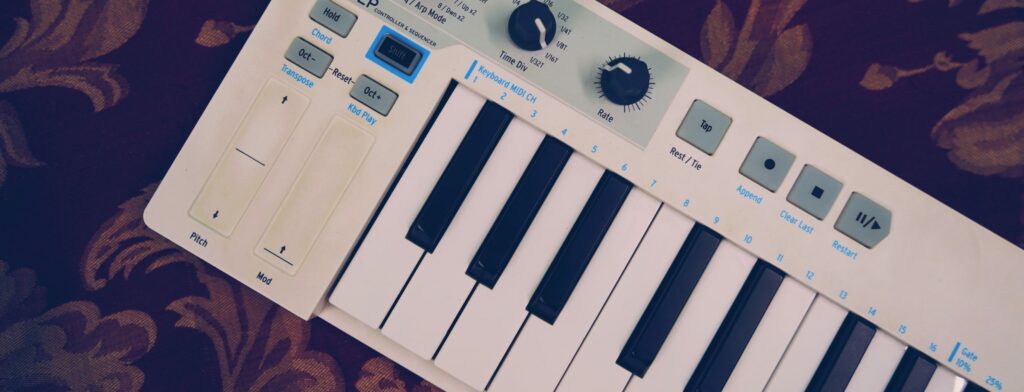
If you have a home studio, chances are your space is limited. Even larger, dedicated studios can’t get too cluttered with audio equipment. When choosing a USB MIDI controller, then, you have to take size into consideration. As mentioned earlier, controllers come in a range of shapes and sizes. Generally speaking, the number of keys determines the controller’s size. Some controllers are about the size of a coffee table book while others are longer than a coffee table itself. Determine where you want to place your controller and measure out your ideal dimensions. Then, when comparing controllers, you can start with those that will comfortably fit in your space.
Some controllers are designed for portability, too. So, if you want a controller that can come along for the ride, you’ll want a smaller one that still features everything you want for on-the-go recording/editing and live playing, if applicable.
Compatibility/Connectivity
Whenever purchasing studio gear, you want to make sure it will properly connect to your devices. Otherwise, you may need to make additional purchases (cables, adapters, software, hardware, etc.) or look for another piece of equipment entirely. The good news is that MIDI is a universal language, meaning MIDI controllers are compatible with just about any device that can read, write, and manipulate MIDI data.
However, while just about every controller can hook up to any DAW, the larger issue is physically connecting the device. This is where the I/O discussion comes back into play. USB MIDI controllers are compatible with devices with USB inputs (which is most music production laptops and desktop computers). Of course, there are multiple types of USB (1.0, 2.0, 3.0, USB-C, etc.). Keep all of this in mind when choosing your controller. Check various online sources for compatibility specs of a given MIDI controller so you’re 100% sure it will work with your setup.
Cost

If your budget is tight, the cost might be the first thing on your mind when choosing a USB MIDI controller. Fortunately, you can now purchase a whole host of quality MIDI controllers for a relatively low price (within the range of $99 and $299). That said, higher-end controllers can exceed well over $1,000. As you might imagine, a controller’s price point often depends on its range of features, quality of construction, ease of use, brand reputation, durability, and so on.
But just because a device costs more doesn’t necessarily mean it’s the best for your needs. If you’re new to digital audio, you could purchase an expensive unit while lacking the knowledge and experience to properly or fully utilize it. In truth, you can do a lot with a $100 MIDI controller, especially if you’re using a professional DAW like Logic Pro X, ProTools, Ableton, or Cubase rich with plugins and internal software features. Indeed, with any gear, it’s a good idea to start small and work your way up as your skillset, space, and budget expand.
Conclusion
You could spend hours (or even days) seeking and comparing MIDI controllers. And even then, you might fail to make a decision. But knowing what you want in a USB MIDI controller can shorten this search significantly. Choose a device with the features you’ll actually use, that fits in your studio, that connects to your setup, and that doesn’t break the bank.
About the Author

Ethan Keeley
Writer, Voice Talent, Musician, and Audio EditorEthan Keeley is a musician, voiceover talent, and writer from Rochester, New York. When he's not on tour with his band Unwill he's working on new songs and stories.
Leave a comment
Log in to comment
